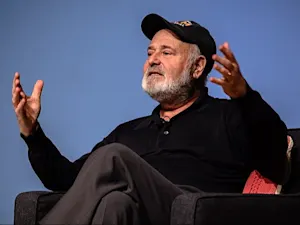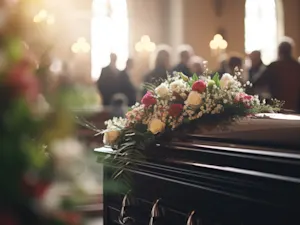
Single Drop of Blood Identifies 1989 Murder Suspect
In the world of crime-solving, sometimes all it takes is a single drop of blood to crack a case wide open. That's exactly what happened in Vermont, where detectives finally arrested a suspect in the 1989 murders of George and Catherine Peacock, a quiet Danby couple found brutally stabbed in their home. For over three decades, the case sat cold, with detectives chasing dead ends, leaving family members without answers. But thanks to modern forensic magic, authorities finally got their man: Michael Anthony Louise, 79, a former family member who had eluded justice for far too long.

The Case Goes Cold
On Sept. 17, 1989, George, 76, and Catherine, 73, were found murdered in their own home. There were no signs of forced entry, no ransacked rooms, and nothing of value missing. Whoever did this wasn't a stranger — they were let in.
Suspicion quickly fell on Louise, who was married to one of the Peacocks' daughters at the time. Within two weeks, police had their eye on him, but back in the '80s, forensic testing wasn't the powerhouse it is today. Investigators had circumstantial evidence but nothing concrete to tie him to the crime. And so, the case went cold, joining the ranks of unsolved mysteries waiting for a breakthrough.

DNA to the Rescue
Enter May 2020, when forensic experts decided to give an old piece of evidence a fresh look. A small drop of blood found inside Louise's car in October 1989 had been tested before, but the results were inconclusive. With today's advanced DNA technology, investigators were able to confirm what they long suspected — the blood belonged to George Peacock.
That single drop was enough to set the wheels of justice back in motion. Vermont detectives and cold-case specialists pieced together decades of evidence, and on a crisp November day in 2023, New York State Police arrested Louise at his home in Syracuse.
The Defense Pushes Back
Despite the DNA evidence, Louise maintains his innocence, pleading not guilty to the charges. His attorney, Daniel M. Sedon, has filed a motion to dismiss the case, arguing that the original investigation was tainted by misconduct. Sedon points to reports from then-Vermont State Police Det. Sgt. Paul Barci, which allegedly outline aggressive tactics used against Louise, including harassment and psychological pressure in an effort to force a confession. Barci himself wrote in 1991, as reported by Bennington Banner, "I personally am prepared to take whatever time is necessary to either arrest Louise or drive him to suicide based on a systematic routine of police harassment."

The defense also highlights alternative leads that were allegedly ignored, including another possible suspect, Ricky Miles, who was rumored to have bragged about committing the crime. Additionally, DNA testing on a cigarette butt found at the crime scene did not match Louise, raising questions about the presence of another individual in the Peacock home at the time of the murders.
A Complicated Path to Trial
Following his arrest, Louise was held without bail at the Southern State Correctional Facility in Springfield, Vermont. He was later granted a $200,000 bail, which was reduced to $20,000, but he did not meet either amount. In June 2023, due to deteriorating health, he was transferred to an acute care hospital, then to a Connecticut facility for further medical treatment. Eventually, he was moved back to Vermont and placed under home detention at the Ascutney Health and Rehabilitation Facility in Windsor.

Judge Cortland Corsones approved the transfer, citing Louise's inability to care for himself. According to Judge Corsones, as reported by Bennington Banner, Louise "cannot walk, takes two people to transfer him from his bed to his wheelchair, and requires two staff members to assist . . . with daily activities such as bathing and going to the bathroom." As part of his release conditions, Louise remains under GPS monitoring as he awaits trial.
What Comes Next?
While the prosecution insists that DNA evidence is enough to convict, the defense argues that the original investigation was deeply flawed. With many of the original investigators are no longer available and with no trial date currently set, the future of the case remains uncertain. More than three decades after the crime, the search for justice in the murders of George and Catherine Peacock continues, leaving lingering questions about whether closure will ever be fully achieved.
References: A Vermont couple was found stabbed to death 33 years ago. A drop of blood found inside a car has led to an arrest. | A 30-year-old drop of blood led to an arrest in this unsolved Vermont murder case | Michael Louise, suspect in 33-year-old Danby double murder, allowed home detention | Louise's attorney files motion to dismiss murder charges: Cites 'unhinged desperation' during investigation | Double-murder suspect Michael Louise pleads not guilty























